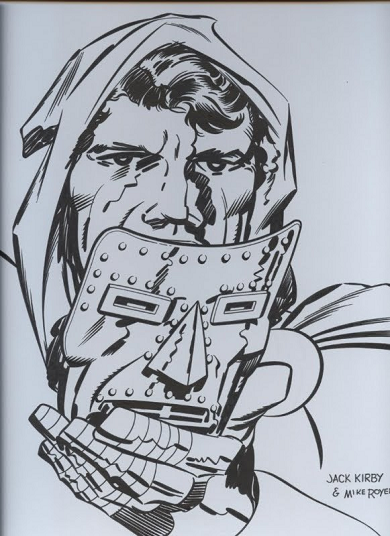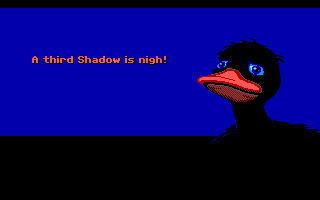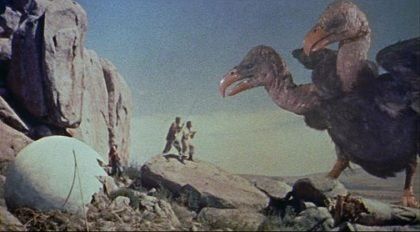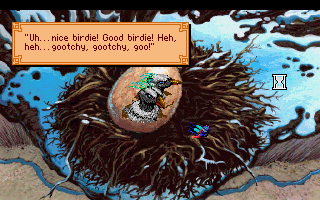Episode III: To Duel in Hell
Eighteen years had now passed since the Second Clone War began. It had dragged on for several years, but the end came eventually, for the largest portion of the Clone armies had been defeated at Ttaz.
After the peace treaty was signed, Ben Kenobi wrote a book, a classic of Jedi military strategy and well-turned prose alike: “Diary of the Clone Wars.” This is clearly based on Julius Caesar’s Commentaries on the Gallic War. (Luke mentions the title, and says that he knows it by heart, in the 1975 third draft.)
Annikin Starkiller, for his part, watched Laif Organa grow to manhood, and took great delight in the boy’s progress. Although Laif was frail, he had a sharp mind and a quick wit, and often thought in unorthodox ways. But this made Annikin love him all the more.
On the day of Laif’s induction into the Jedi Order, Annikin gave him one of his rings willingly, so that Laif might be protected in battle; for he still was weak in body.
Annikin, too, had grown. He was now a mature man, and the Grand Master of the Jedi Order, presiding over the Privy Council or triumvirate which governed the Knights. For Bunden Debannen, the ancient and wizened Master of the Order, was at last ready to retire.
(Anakin Skywalker in the prequels, in contrast, craves the title of Jedi Master, but is denied it.)
Carl Rieekan’s sons, Crispin and Corwin, were also now grown to full strength, and were themselves Jedi Knights. (Think of them as a combination of the Christian brother-saints Crispin and Crispinian, made famous by Shakespeare in Henry V, and the twin sons of Elrond, Elladan and Elrohir, in the book version of The Lord of the Rings.)
Meanwhile, another Jedi had been inducted at the same time as Laif: Lando Kadar. No one knew where he came from, for he kept his parentage a mystery to all. He himself claimed not to know who his father was, and said only that he was the child of a slave.
--
The peace of the Republic was increasingly disturbed by fearful bombings, like those which had claimed the life of the beloved Chancelloress Irina. Consul Pestage, whose firm leadership had saved the Republic in the Second Clone War, had not yet lain down his war powers, and was never asked officially to do so.
Now a Third Clone War broke out. The last remnant of the Clones staked all upon a decisive, make-or-break battle, akin to Robert E. Lee’s army at Gettysburg in the US Civil War. They struck at Organa Major (i.e., the planet called Alderaan in today’s SW) with an assault fleet, commanded by Xerxes Valorum.
As the orbital combat raged, Annikin and Ben Kenobi took to starfighters and disabled Xerxes’ command ship. The heroes repulsed the assault with minimal losses, thanks to the timely arrival of a Republic fleet, but Xerxes escaped once again in a small shuttle. (The battle strategy here comes from Ulysses S. Grant’s victory at the Battle of Shiloh, with the help of a relief force led by Don Carlos Buell. General Lew Wallace, author of Ben-Hur, also fought at that battle.)
Annikin went after Xerxes, and tracked him to the desert planet of Utapau. In orbit there, they had a dogfight. Annikin’s starship was damaged, and he crash-landed. (Think of Howard Hughes’ near-fatal airplane crash in 1946.)
Annikin survived the crash due to his magic Ring, and was rescued by a young farm-girl named Beru.
(Let’s say her full name was Beru Thorpe—which, besides appearing in the 1973 Journal of the Whills, is also the surname of a famous multiracial American athlete, Jim Thorpe, and thus suggests the kind of mixed heritage commonly found in the American West.)
Beru Thorpe nursed Annikin back to health. They fell in love, and got engaged. Annikin, by now thoroughly sick of the slaughter inherent in war, decided to retire from the Jedi Order—once he had found and slain Xerxes Valorum.
But first he had to find him. Xerxes was in hiding.
So Annikin rode across the desert plains for months, following his trail, seeking him out. At last he found him in the back streets of a small seedy town—perhaps Mos Eisley itself.
They had a gunfight, since Xerxes had no sword at the time, and Annikin had at last matured into a gentleman. Annikin was wounded in the shoulder, but he survived, while Xerxes fell.
Meanwhile, though, something sinister was happening back at the Thorpe farm.
Beru probably had a sister, who was jealous of Beru’s intimacy with Annikin. Let’s call her Breha—the name of Leia Aquilae’s mother in the 1974 rough draft.
Beru, I’d guess, had brown hair and brown eyes, which the older and more mature Annikin now admired precisely because they were different from his own blue eyes. But Breha, though she shared Beru’s brown hair, had flinty blue eyes. Men shrank from them, and feared to wed her, and she was lonely.
On the very day Xerxes fell, Breha was surprised when she met Annikin, seemingly returned from his wanderings. He flirted with her, and kissed her, and she gave herself to him. In truth, though, this was Lando Kadar in a disguise of Elvish glamour. Lando, who had already given himself in secret to the Dark Side, and begun to create a shadow cult, the Sith Order, within the Jedi.
The resulting child was Luke Starkiller.
When Annikin returned, Breha knew she was pregnant, and her father urged Annikin to make an honest woman of her. As a noble man, Annikin agreed, and married Breha instead of Beru.
(This whole storyline, right down to the sisters with different eye colors, derives loosely from the tale of the Biblical patriarch Jacob and his two wives, Rachel and Leah, in the Old Testament.)
Beru, meanwhile, married a suitor whom she had earlier rejected. He was another farmer, a bit of a dullard, but respectable—Owen Lars. (Basically, think of Lucy Westenra’s barrage of suitors in Dracula.)
With Annikin now retired as a moisture farmer on Utapau, Ben Kenobi took up his place as the Grand Master of the Jedi Order, though there were some in the greater Council who spoke against his appointment.
But Bunden Debannen, now on his deathbed, said it was a good choice, and this swayed the doubters. And, as he lay dying, old “Buffy” whispered secret words of counsel to Ben, which no one else heard. For Ben did not reveal them.
Four Years Later
The bombings continued, despite the decisive end of the Third Clone War. In truth, now, they were almost invariably perpetuated by Lando’s cabal of Sith Knights within the Jedi themselves.
Lando had made a secret pact with the Consul, Lord Pestage: the Sith would establish and support his rule as a monarch, and serve as the power behind the throne he craved. In return, Lando would be made the head of the New Order.
As a result, thanks to Lando’s lobbying, the Senate invested the Consul Pestage with a new title: the Emperor of the Galaxy.
This was widely popular in the Senate, and among some, though hardly all, on the street. One might perhaps say that liberty in the Old Republic died with thunderous and tepid applause at the same time.
Only one vote in the Senate was cast against the motion: the vote of the Senator of Organa Major—Alana. (She’s basically Padme.)
Emperor Pestage was not a Sith Lord. In fact, he’d really have been the “Nixonian bureaucrat” whom GL envisioned as the Emperor before he came up with the evil sorcerer Palpatine in ESB. Still, Pestage did command a loyal legion of secret Sith Lords within the Jedi Order—or, at least, outwardly loyal.
But, under Ben Kenobi’s leadership, about one-third of the Jedi—those who were willing to take a stand against evil—plotted in secret to overthrow the Emperor and restore the Republic, though they would commit treason in the process.
The majority of the Jedi, however, resisted. Another one-third did so because they were secretly Sith or Sith sympathizers, or hoped to profit from Sith rule. But the rest simply feared to commit treason.
(These figures are based on John Adams’ famous educated guess about overall American opinion on the merits of the War of American Independence at the time. In the 1974 rough draft, after all, GL put words from Adams’ diary, describing his feelings about the Boston Tea Party, nearly verbatim in the Emperor’s mouth.)
It’s actually possible that, just as in Rome (where there had been Kings in the pre-Republic days), there had been Galactic Emperors, once, long ago. (This could explain the thinking behind the reference to “the later corrupt Emperors” in the SW 1977 novelization.)
The result was the Jedi Rebellion, which culminated in the Battle of Condawn.
The war did not go well for the insurrectionist Jedi. They lacked the resources of the Empire, upon which the Sith, now openly declaring themselves, could draw freely. Moreover, there were traitors among the Jedi and their friends, some of whom were not discovered until years later.
But the Jedi had one great hope. Annikin Starkiller put down his hydrospanner and took up his lightsaber, and went forth once more to help his beloved Jedi Order.
The night before the final battle, Annikin slept once again with Alana. Nine months later, she would give birth to Leia Organa, who took after her father in mind and body.
--
In the battle on the fiery world of Condawn, most of the Rebel Jedi died. Crispin and Corwin perished before their father’s eyes, and Carl Organa himself lost both legs and one arm. Ever afterward, he glided about in a silver wheelchair, dressed in mourning black. In his great grief, he would not deign to receive prostheses.
(Think of Carl as a combination of Davros of Skaro from classic Doctor Who; the crippled Christopher Pike in “The Menagerie” from Star Trek TOS; and the wheelchair-bound father of the secondary hero in the 1927 silent film about WWI air aces, Wings.)
At last only three Rebels were left standing: Ben, Annikin, and Laif Organa, the bearers of the three magic Rings.
Using a clever dueling move, Lando Kadar rendered Laif Organa’s lightsaber inoperable, and took him hostage. He demanded that Annikin order Laif and Ben to give up their Rings, and that Annikin himself do likewise. Thus Lando revealed his true origin, and the real meaning of their long-ago promises.
But to reassure his father, Lando swore that no harm would come to Laif from his hand if they obeyed.
Annikin gave up his own ring to Lando, and begged Laif and Ben to do likewise. They did.
Then Lando killed Laif.
Annikin, grief-stricken, took up his sword and fought with Lando. He cut off Lando’s right hand, but his mind was clouded with sorrow, and his strength was ebbing. Lando overpowered him, and cut off both of Annikin’s hands, rendering him helpless.
Now, to twist the knife further, Lando revealed Luke’s true parentage to them both. And then, Lando beheaded his own father.
Furious, Ben Kenobi charged Lando with his lightsaber.
--
Their duel was magnificent to see, set against the backdrop of lava.
Few Jedi, even those already committed to the Sith, ever used any lightsaber color other than white. But Ben Kenobi had always been unorthodox. So, after his elevation in rank, he had chosen to use a red lightsaber.
And Ben and Vader’s contrasting saber blades shone against the fiery setting.
At last, Ben Kenobi saw an opening, and stabbed Lando in the heart. But Lando survived, thanks to his Rings. Lando cut off Ben’s right hand, and cast him down, and forced him to yield.
Cruel in victory, Lando stole Ben’s unique sword, and his Kiber Crystal, as trophies for the new Sith Order. Annikin’s and Laif’s crystals, however, had disintegrated with their owners’ demise, for they had not been passed on beforehand.
(Ben mentions his lost Kiber Crystal at one point in the 1975 third draft. The idea of a Kiber Crystal dissolving when its possessor dies comes from a trait of the magical Lenses in Doc Smith’s Lensman books.)
But in recompense for taking away Ben’s sword, Lando left Annikin’s sword for him to have, that Ben might pass it on to Luke. After all, what good had it done its original owner?
And so, Lando walked off, triumphant, leaving the wounded Ben Kenobi to grieve by his fallen King and his dead friends.
Afterward, Lando took a new name, to mark his victory over death: Darth Vader. He wore a life-support device to sustain his ravaged heart, but he had no need of a mask, except insofar as it hid his Mark of the Sith. After all, he didn’t wish to remind the Emperor constantly of the true power behind his throne.
--
I might pause to point out here that, as far as I’m aware, the earliest known mention of Vader being pushed into a lava pit in The Duel is actually in the 1977 Rolling Stone interview with GL.
The text of GL’s 1975 discussion with Alan Dean Foster, however, says only that Ben and Vader have a “big battle where Luke’s father gets killed.”
Also, here I’m pulling in an additional comics history reference, to Dr. Doom of the Fantastic Four.
The common story, the original canon of the Marvel universe, is that Dr. Doom was horribly burned in a lab experiment, and hid his features behind iron armor as a result. But the artist, Jack Kirby, himself believed that Doom only had a small facial scar, and hid his handsome face behind a mask out of pure vanity.
Here is Kirby’s version of the True Face of Doom:

--
Luke Starkiller was raised on Utapau/Tatooine, in ignorance of his true parentage. Ben Kenobi watched over him from a distance—occasionally going back to Organa Major/Alderaan to check on Leia.
As seen in the 1975 third draft, Ben replaced his lost right hand with a mechanical prosthesis, covered with fragile synth-flesh (since, as with the taboo against machine-brains in Dune, clone parts were likely outlawed in the wake of the Clone Wars). After all, even if his infirmity was discovered, he reasoned, who would expect a real Jedi to have a robotic hand?
But then, Ben had always been an imperfect Jedi at best.
Ben also built a new lightsaber for himself, with the standard color for a blade. For such elegant weapons were increasingly uncommon in that increasingly barbaric age. And a saber blade as distinctive as Ben’s old one had been would make any Imperial stormtrooper worth his pay think instantly of the old Commander of the White Legions.
On one of his visits to Organa Major, Ben noticed that Alana had a new child: a boy named Puck. Seeing this, he finally got over his own inhibitions (for she was very beautiful). Soon Alana had another son, a boy named Bink.
(Both of these children’s names come from the 1974 drafts. Even as late as 1977, GL is on record as stating that he thought Leia had two younger brothers of different ages, an idea that also goes back to 1974.)
Darth Vader was inducted as the new Head of the Sith Order, whose knights all wore fearsome masks of similar shape. He hoped one day to supplant Emperor Pestage, who was, in his view, only a noble and a politician, though very cunning.
In fact, Vader secretly dreamed of becoming immortal via his Ring, and ruling over an Eternal Empire. For the grant of longevity was one of the Rings’ powers. Already, his lifespan was beginning to stretch. In the seventeen years after the Battle of Condawn, he aged only half that, as ordinary men would reckon time.
Little did he know what would happen in the years ahead... and of the hopes that yet remained in the galaxy.
The Story So Far (the good parts version):
Annikin Skywalker/Starkiller: father of Lando Kadar (Darth Vader) and Leia Organa
Luke Starkiller: son of Lando Kadar, presumed son of Annikin Starkiller, and nephew of Leia Organa
Lando Kadar/Darth Vader: father of Luke Starkiller, half-brother of Leia Organa
Leia Organa: half-sister of Darth Vader, aunt of Luke Starkiller
No quiz afterward, just remember.
Extra Credit for history and/or literature nerds: does Luke and Leia's new familial relationship remind you of anything? Make sure to sing your answer in time to the leitmotif.



